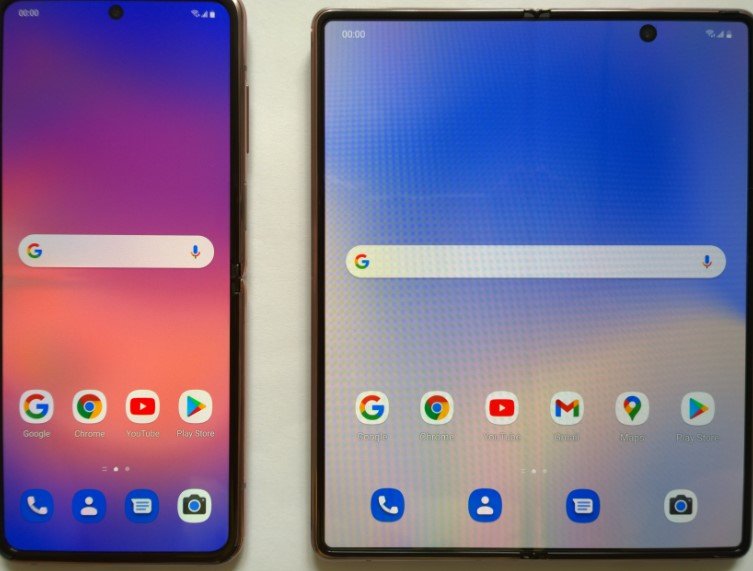Samsung Electronics is pushing hard to overcome tough semiconductor hurdles through big AI investments and new foldable devices. As of September 2025, the company deals with supply chain problems and strong rivals like TSMC while betting on AI growth and innovations like the tri-fold Galaxy G-Fold to drive future profits.
Semiconductor Struggles Hit Hard
Samsung faces ongoing supply chain disruptions that slow down chip production and raise costs. These issues come from global events, including trade tensions and material shortages, making it hard for the company to keep up with demand.
Competition adds more pressure, with TSMC leading in advanced chip making. Samsung’s foundry business reported losses in early 2025, even as overall profits rose slightly. Analysts note that uncertain spending on new equipment clouds the outlook for quick recovery.
Recent data shows global wafer foundry revenue jumped 14.6 percent in the second quarter of 2025, but Samsung trails behind top players. This gap pushes the company to rethink strategies and seek new partnerships to regain ground.
Big Bets on AI Research and Development
Samsung pours billions into AI to stay ahead in the tech race. The company plans to invest about 20 trillion won by 2030 on advanced semiconductor research, including a new complex set to open soon.

This focus aims to boost AI chip production, where demand surges from data centers and smart devices. Samsung’s leaders see AI as a key driver for higher earnings, especially after missing out on some early boom opportunities.
One major move includes talks for mergers and acquisitions to strengthen its position. A potential deal with Tesla for AI chips starting in 2027 could bring in billions and help offset current losses.
- Key AI investment areas: Advanced packaging for denser chips, AI-driven cybersecurity tools, and high-bandwidth memory for faster processing.
- Expected outcomes: Better competition against rivals and new revenue from AI applications in cars and consumer tech.
Samsung’s AI efforts earned awards in 2025 for innovations that blend AI with everyday devices, showing progress in this vital field.
Foldable Tech as a Growth Engine
Foldable phones offer Samsung a way to diversify beyond chips. The company leads in this market, with new models like the tri-fold Galaxy G-Fold expected to launch by late 2025.
This device promises a 10-inch screen when fully open and a 6.5-inch display when closed, targeting users who want tablet-like features in a phone. Leaks suggest it will include advanced hinges and AI features for better user experience.
Market forecasts predict foldable sales will grow steadily through 2032, driven by lower prices and improved designs. Samsung aims to capture more share by adding features like wireless charging and NFC payments.
| Foldable Model | Key Features | Expected Launch | Price Range |
|---|---|---|---|
| Galaxy Z Fold7 | Dual-screen setup, enhanced AI | Mid-2025 | $1,800-$2,000 |
| Galaxy G-Fold (Tri-fold) | Three-fold design, large inner display | Late 2025 | $2,200-$2,700 |
| Galaxy Z Flip7 | Compact fold, better battery | Mid-2025 | $1,000-$1,200 |
These innovations help Samsung stand out against competitors like Huawei and Google, who also push foldable tech.
Rivals eye the market too, with Apple rumored to enter in 2026. Samsung’s early lead gives it an edge, but it must keep improving to maintain dominance.
Geopolitical Tensions Add Risks
Trade disputes between major powers complicate Samsung’s global operations. U.S. sanctions on chip exports to certain countries force the company to adjust supply chains and build more local facilities.
China’s rising chip exports, despite restrictions, create new competition. Samsung responds by boosting domestic production in South Korea and exploring partnerships to secure materials.
These tensions highlight the need for resilient strategies. Samsung forms task forces for custom chips, aiming for self-reliance by 2026.
Outlook for Recovery and Growth
Experts see hope in AI recovery, with Samsung positioned to benefit from booming demand. The company’s mix of chip investments and consumer tech could lead to stronger profits by 2026.
Challenges remain, but strategic shifts like cost cuts in non-AI areas free up funds for high-growth sectors. Investors watch closely for signs of turnaround.
Share your thoughts on Samsung’s strategy in the comments below, and spread the word by sharing this article with fellow tech enthusiasts.








